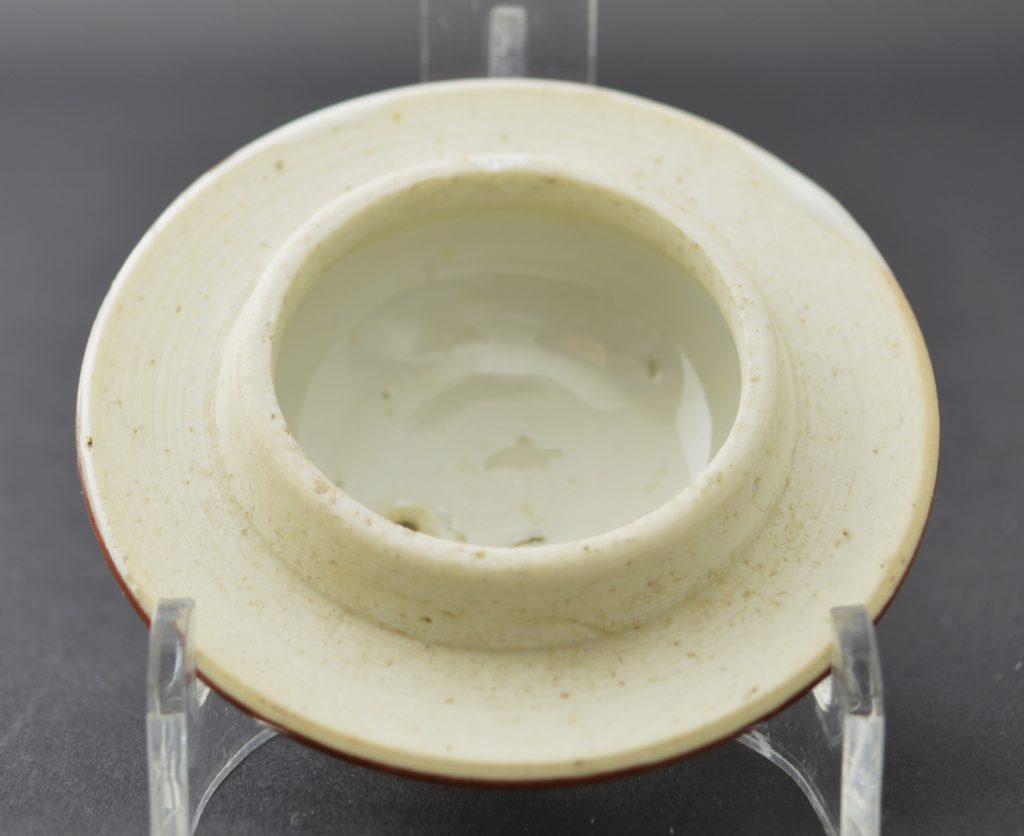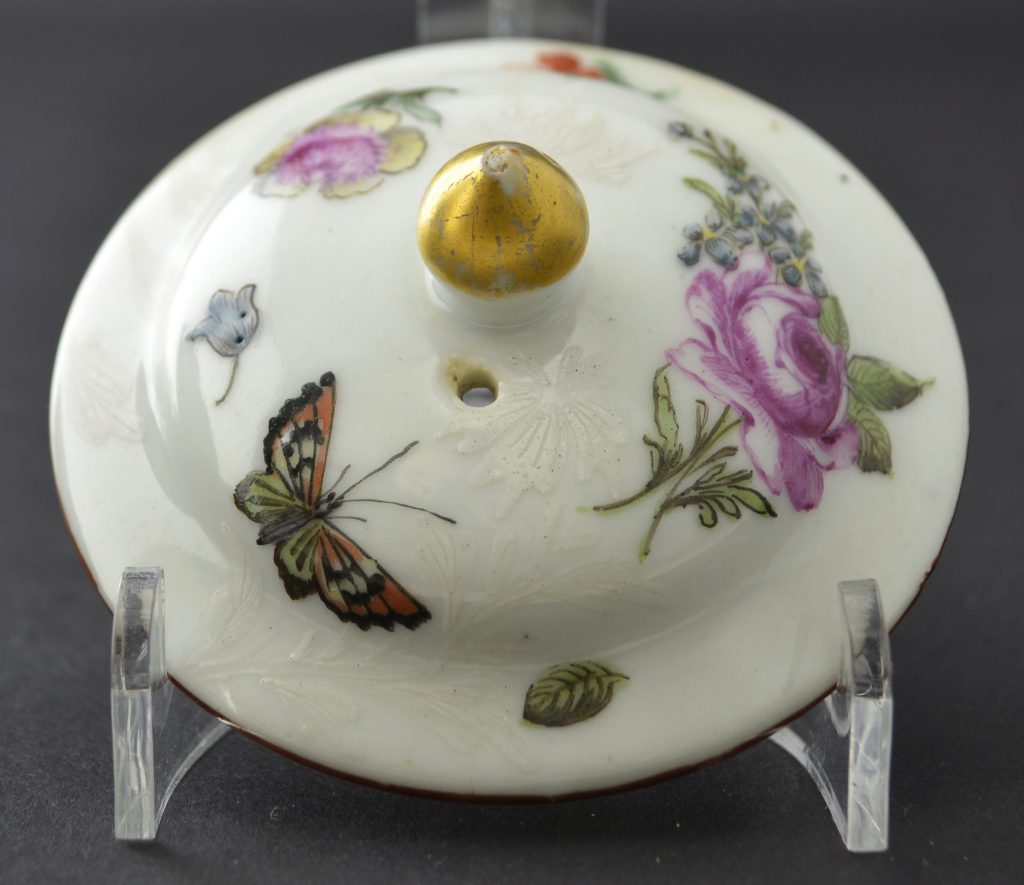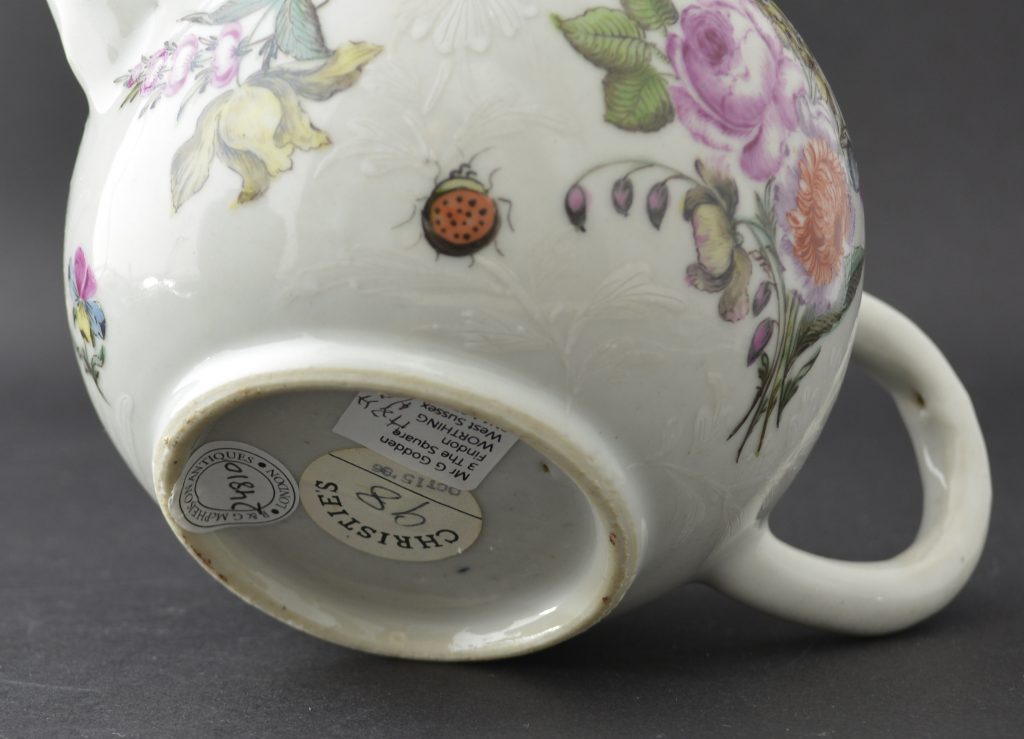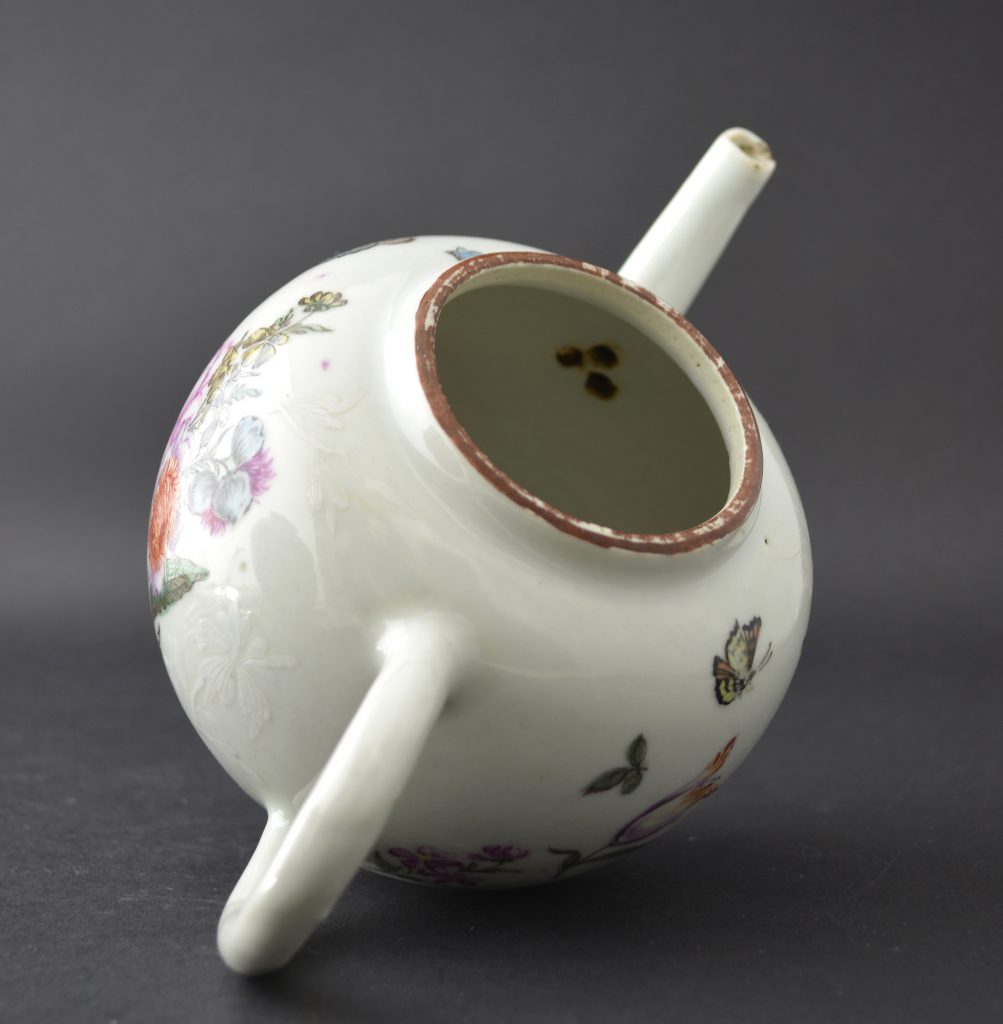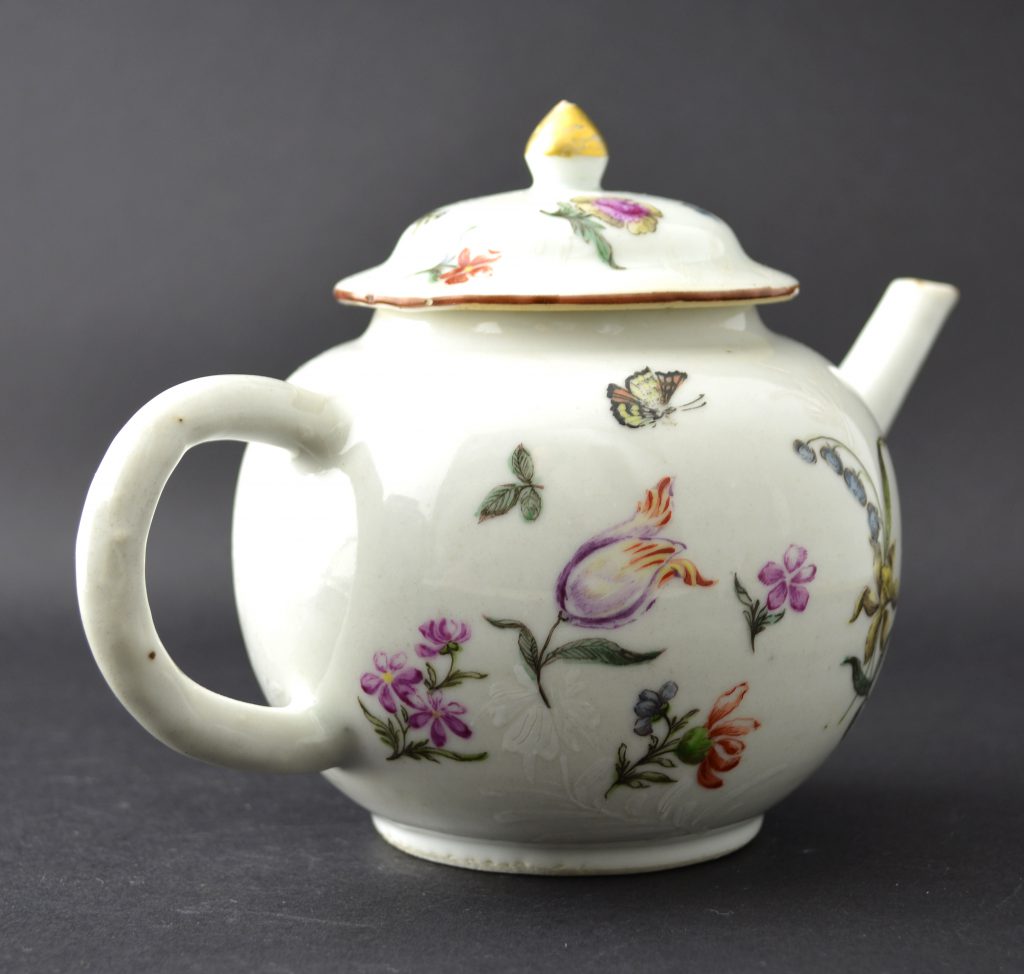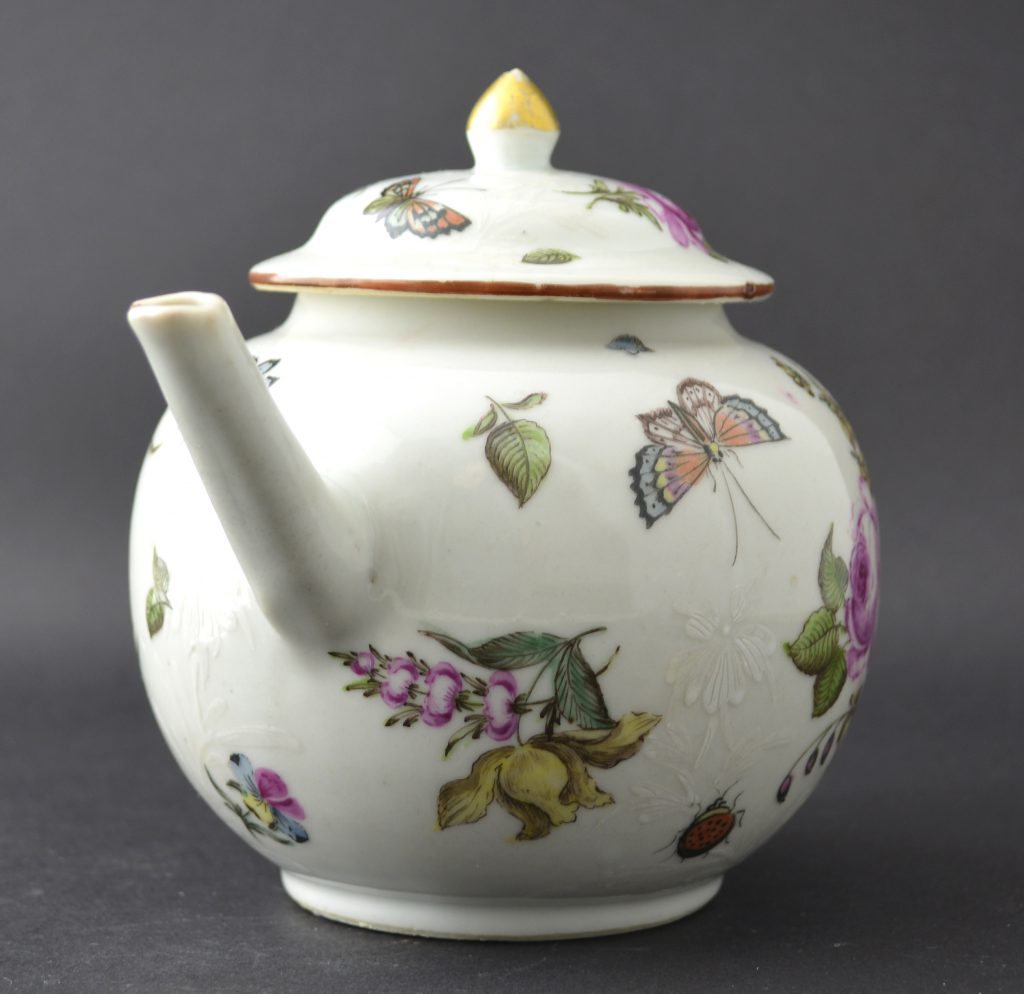This type of English enamel decoration on Chinese export porcelain should be seen in a different way to what is referred to as `over-decorated` or `clobbered` porcelain. Those terms refer to Chinese porcelain that was imported into Europe as finished articles, but were either too plain for merchants to sell or their profits could be enhanced by adding enamels over the existing Chinese decoration. The present example was plain white when it arrived in England, it would not have been salable and so no merchant would have ordered it to retail. However, James Giles must have ordered allot of white porcelain specifically for decoration at his workshop in London. The shapes ordered were the lasted fashion in Europe as was the decoration he added. To my mind this makes these objects separate and distinct from other Chinese porcelain, China only provided the blank `canvas` and even that was of a form dictated to by Europe. For this reason these objects could primarily be see as English, they would have been totally alien to the Chinese.
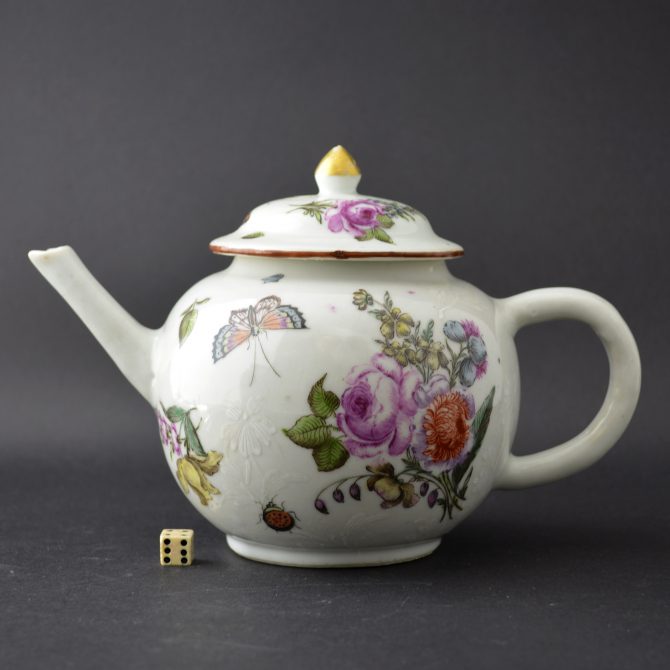
A Chinese Export Teapot and Cover Decorated in London c.1755 – 1765, Probably in the James Giles Workshop
An 18th Century London decorated Chinese Export Porcelain teapot, porcelain with a moulded design c.1750-1760, Enamelled in London between c.1755-1765. The moulded Chinese Export Porcelain teapot and cover was painted in London, probably in the James Giles workshop and the flower painting is categorised as Group ‘A’. Painted with a large sprig of English flowers, butterflies and further scattered flowers.
SOLD
- Condition
- In good condition but with a small chip to the end of the spout.
- Size
- Height : 12cm (4 3/4 inches)
- Provenance
- The Godden Collection of English-Decorated Chinese Porcelain. The great ceramic historian Mr. Geoffrey Godden says of his own collection "As I turn eighty-five and with my Biro fast running low, it seems time to pass on the smallest, the most select and probably the most interesting of my past collections-the mid-eighteenth century Chinese porcelains decorated in England for resale on the home market. The smallest of my collections because it represents a very rare class, produced within that historically-important period 1740-1760".
- Stock number
- 24810
